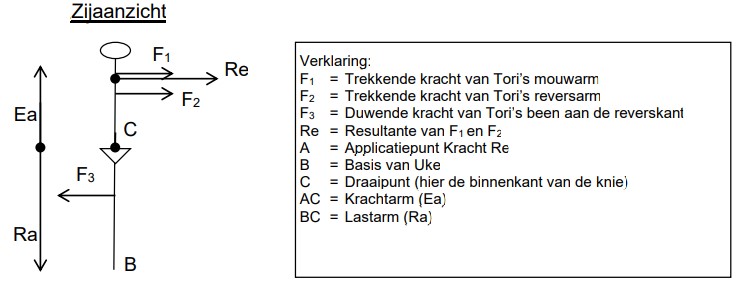Hikikomi-gaeshi 引込返 (Pulling Sacrifice Throw)
Category: Ma-sutemi-waza (Rear sacrifice technique)
Translation: “Pulling reversal” or “Drawing in reversal”
Description
Hikikomi-gaeshi is a rear sacrifice throw applied when uke bends forward, typically in an attempt to dominate the position or initiate a throw. Tori reaches over uke’s shoulder with one hand to grab the back of the belt, then drops backward, inserting a leg between uke’s legs or near the inside of the thigh.
By combining a strong pull and a lifting motion with the leg, tori flips uke over and executes the throw, either directly forward or diagonally, depending on the positioning and momentum.
This technique is often seen in transition phases, particularly in ne-waza, and can be used as a counter against forward throws or when uke leans too far into tori.

Biomechanics of Hikikomi-gaeshi
-
Type: Couple (Re + F3)
-
Re: The arms generate pulling force to guide uke over.
-
F3: The leg (placed near uke’s inner thigh or between the legs) provides a lifting motion.
-
C: The pivot point where uke rotates around the leg/hip.
-
This combination of upward and pulling force creates a centrifugal effect, sending uke over tori’s body in an arc.

Did you know?
-
The Japanese verb hiku (引く) means to pull, and komi (込む) means to draw in or insert. Together, hikikomi implies pulling inwards.
-
The suffix gaeshi (返し) comes from the verb kaesu (返す), meaning to reverse or to return, and indicates a reversal technique.
-
There is no word “hikomi” in Japanese — it’s a common error when misreading the compound.
-
Hikikomi-gaeshi is sometimes confused with sumi-gaeshi, but differs in that it usually involves a grip on the belt and emphasizes pulling downward into the throw, whereas sumi-gaeshi often uses a more upright lift.